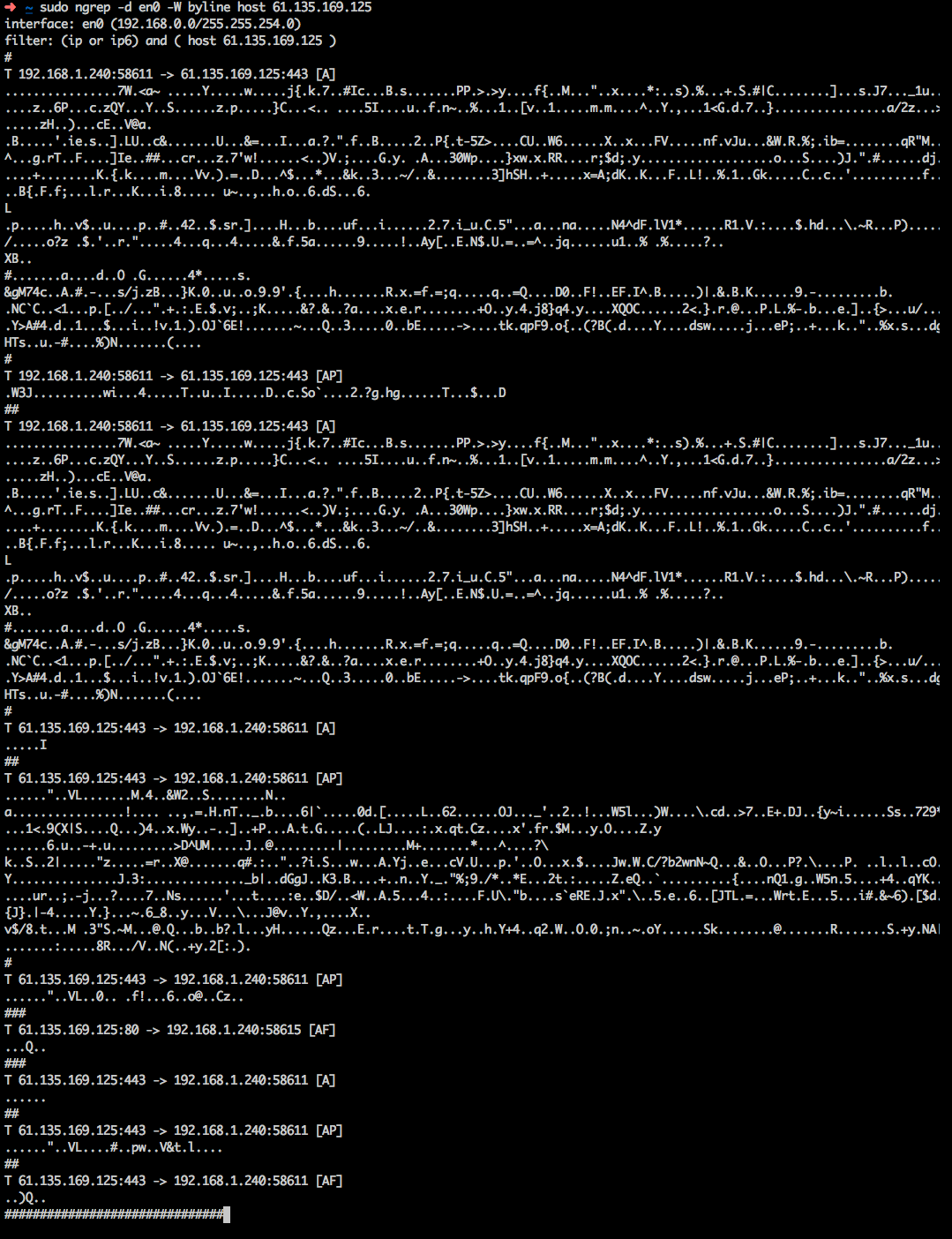1、ngrep
ngrep工具是grep命令的网络版,ngrep用于抓包,并可以通过正则表达式,过滤、获取指定样式的数据包。能识别TCP、UDP和ICMP协议,理解bpf的过滤机制。
可以用来分析、定位服务中的问题。
因为如果包含多个服务的大型服务出现问题,需要逐步分析定位问题到具体的服务。使用ngrep抓包可以确定数据包是否已经到了某个服务模块,从而定位是哪个部分的问题。
1.1 安装
- Mac:
brew install ngrep - 其它平台
1.2 语法
ngrep <-LhNXViwqpevxlDtTRM> <-IO pcap_dump> <-n num> <-d dev> <-A num> <-s snaplen> <-S limitlen> <-w normal|byline|single|none> <-c cols> <-P char> <-F file>
1.3 选项
- -q :不显示包的详情,都以‘#’ 号代替现实
- -e :显示空数据包
- -i :忽略大小写
- -v :反转匹配
- -R :don't do privilege revocation logic
- -x :以16进制格式显示
- -X :以16进制格式匹配
- -w :整字匹配
- -p :不使用混杂模式
- -l :make stdout line buffered
- -D :replay pcap_dumps with their recorded time intervals
- -t :在每个匹配的包之前显示时间戳
- -T :显示上一个匹配的数据包之间的时间间隔
- -M :仅进行单行匹配
- -I :从文件中读取数据进行匹配
- -O :将匹配的数据保存到文件
- -n :仅捕获指定数目的数据包进行查看
- -A :匹配到数据包后dump随后的指定数目的数据包
- -s :set the bpf caplen
- -S :set the limitlen on matched packets
- -W :设置显示格式byline将解析包中的换行符
- -c :强制显示列的宽度
- -P :set the non-printable display char to what is specified
- -F :使用文件中定义的bpf(Berkeley Packet Filter)
- -N :显示由IANA定义的子协议号
- -d :使用哪个网卡,可以用-L选项查询
- -L :查询网卡接口
2、使用实例
注意:需要以超级管理员身份执行该命令
-
ngrep host 192.168.1.8 udp:抓udp包 -
ngrep -W byline -qd any '.event' udp port 1514:抓取1514端口udp包,过滤正则匹配包含‘event’字段的包 -
ngrep -W byline 'GET /' 'tcp and dst port 80' -d eth1 | awk -v RS="#+" -v FS=" " 'length() > 1000':查询大于1k的请求头 -
ngrep -d en0 -W byline host 192.168.1.9:抓取本地 en0 和 61.135.169.125(百度ip)的通信信息,并以行打印出来